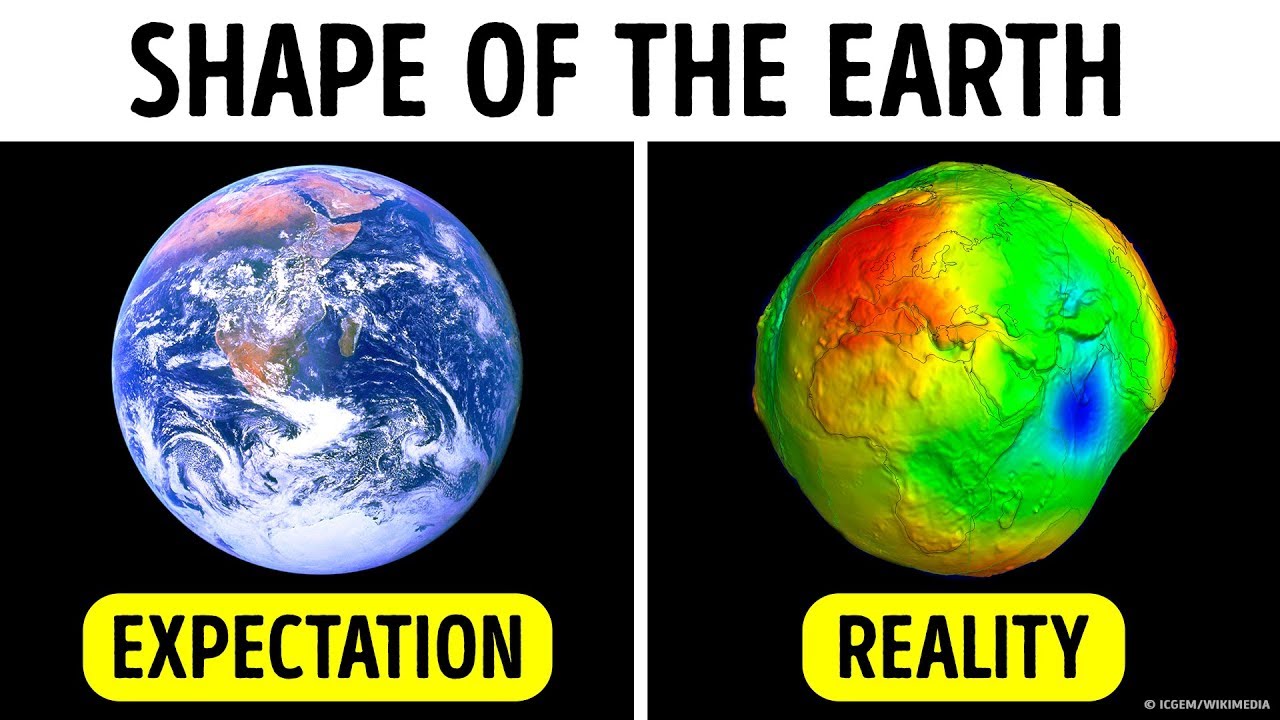15 Facts About Earth Sound Too Bizarre to Be True
When it comes to our planet, we consider everything about it to be well-known and usual. Surprisingly, we know much more about space than we do about our common planet. For example, we call Earth the blue planet, though scientists believe that it was not always blue. Inside it’s solid gold, but its surface is covered in viruses.
Throughout history, humanity hasn’t been able to learn everything about our planet. But the facts that we keep learning are so amazing that they motivate us to keep studying the world we live in. Did you know that our planet is gradually rotating slower and slower? And how birds can create clouds? Or that Earth’s toughest living thing is so small you can’t see it? Interested? Then check out these amazing facts about planet Earth that you may not be aware of!
#brightside
Other videos you might like:
Stephen Hawking’s 7 Predictions of Earth’s Demise in the Next 200 Years https://www.youtube.com/watch?v=Lq9wipOftXw&
15 Dramatic Changes on Earth Revealed by NASA https://www.youtube.com/watch?v=Q7txs0SPaJw
9 Earth-Like Planets We Can Move On Right Now https://www.youtube.com/watch?v=z9tkd5tuR8U&
EPISODES:
Days are becoming longer 00:00
We live next to a mega-moon 0:51
Birds can create clouds 1:19
Earth is not quite round 1:50
We’re all turning at different speeds 2:24
Antarctica is a dessert…I mean a desert 3:01
Gravity is not the same everywhere 3:20
Earth could have been purple before it turned blue and green 3:55
Earth’s toughest living thing is so small you can’t see it 4:24
Earth is hotter when further away from the Sun 5:09
We can’t dig up most of Earth’s gold 5:42
You could fall right through the Earth 6:12
Earth’s greatest living achievement is a fungus 6:54
The Sun’s heat is beneath our feet 7:39
You can find more viruses on Earth than stars in the sky 8:29
Preview photo credit:
Geoid undulation in false color, shaded relief and vertical exaggeration (10000 scale factor): By International Centre for Global Earth Models (ICGEM) – http://icgem.gfz-potsdam.de/vis3d/longtime, CC BY 4.0 https://creativecommons.org/licenses/by/4.0, https://commons.wikimedia.org/w/index.php?curid=81462823
Animation is created by Bright Side.
Red-billed Quelea Quelea quelea flock at waterhole: By Alastair Rae, CC BY-SA 2.0 https://creativecommons.org/licenses/by-sa/2.0, https://commons.wikimedia.org/w/index.php?curid=2229241
Some fullgrown Armillaria ostoyae (sombere honingzwam) in Park Velp: By Henk Monster, CC BY 3.0 https://creativecommons.org/licenses/by/3.0, https://commons.wikimedia.org/w/index.php?curid=54456762
Fungi big time! Paxillus involutus: By Englepip, CC BY 2.0 https://creativecommons.org/licenses/by/2.0, https://commons.wikimedia.org/w/index.php?curid=46376096
NASA Image and Video Library
Animation is created by Bright Side.
Music by Epidemic Sound https://www.epidemicsound.com/
Subscribe to Bright Side : https://goo.gl/rQTJZz
—————————————————————————————-
Our Social Media:
Facebook: https://www.facebook.com/brightside/
Instagram: https://www.instagram.com/brightgram/
5-Minute Crafts Youtube: https://www.goo.gl/8JVmuC
Stock materials (photos, footages and other):
https://www.depositphotos.com
https://www.shutterstock.com
https://www.eastnews.ru
—————————————————————————————-
For more videos and articles visit:
http://www.brightside.me/



![[ID: jvNU5bwzclI] Youtube Automatic](https://bizimtube.com/wp-content/uploads/2021/03/id-jvnu5bwzcli-youtube-automatic-236x133.jpg)
![[ID: 0yCJMt9Mx9c] Youtube Automatic](https://bizimtube.com/wp-content/uploads/2021/03/id-0ycjmt9mx9c-youtube-automatic-236x133.jpg)
![[ID: vAJM5EdDwjU] Youtube Automatic](https://bizimtube.com/wp-content/uploads/2021/03/id-vajm5eddwju-youtube-automatic-236x133.jpg)
![[ID: LxOmofEFub4] Youtube Automatic](https://bizimtube.com/wp-content/uploads/2021/03/id-lxomofefub4-youtube-automatic-236x133.jpg)
![[ID: wFAh77GBsHs] Youtube Automatic](https://bizimtube.com/wp-content/uploads/2021/03/id-wfah77gbshs-youtube-automatic-236x133.jpg)
![[ID: tjwrG4Debc4] Youtube Automatic](https://bizimtube.com/wp-content/uploads/2021/03/id-tjwrg4debc4-youtube-automatic-236x133.jpg)
![[ID: _28bYGZtnU8] Youtube Automatic](https://bizimtube.com/wp-content/uploads/2021/03/id-28bygztnu8-youtube-automatic-236x133.jpg)
![[ID: 1e7bhUjUEJ8] Youtube Automatic](https://bizimtube.com/wp-content/uploads/2021/03/id-1e7bhujuej8-youtube-automatic-236x133.jpg)
![[ID: QjyCviSKY2U] Youtube Automatic](https://bizimtube.com/wp-content/uploads/2021/03/id-qjycvisky2u-youtube-automatic-236x133.jpg)
![[ID: -5i-vB4-kFk] Youtube Automatic](https://bizimtube.com/wp-content/uploads/2021/03/id-5i-vb4-kfk-youtube-automatic-236x133.jpg)
![[ID: covHhQgr5kU] Youtube Automatic](https://bizimtube.com/wp-content/uploads/2021/03/id-covhhqgr5ku-youtube-automatic-236x133.jpg)
![[ID: mX7FEHws43A] Youtube Automatic](https://bizimtube.com/wp-content/uploads/2021/03/id-mx7fehws43a-youtube-automatic-236x133.jpg)